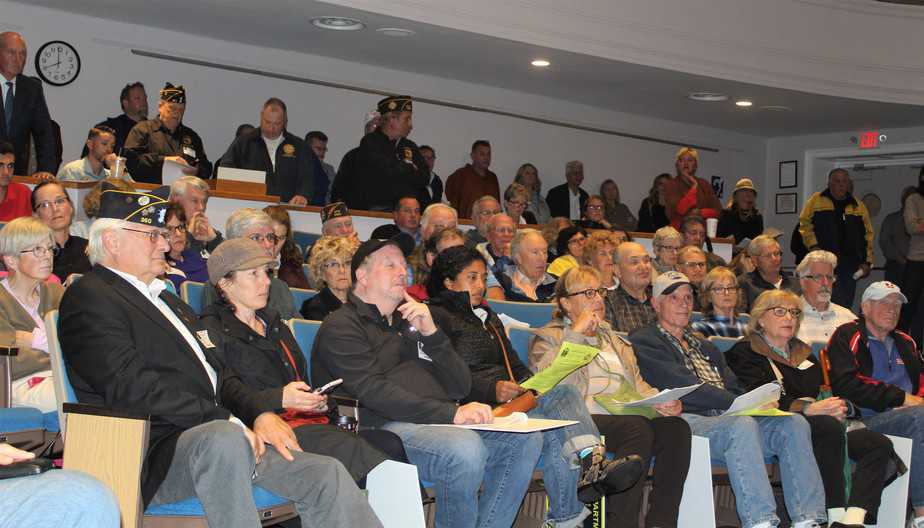Dozens of residents spoke at this week’s Town Board meeting on proposed changes to C-6 zoning and its effect on downtown Huntington.
The latest round in the fight over whether Huntington should make room for younger people in search of more and cheaper housing or whether that process has already gone too far played out at a public hearing about changes first proposed in September.
In September, Town Supervisor Chad Lupinacci and Town Council members Ed Smyth and Gene Cook had outlined a proposal to change the rules that govern downtown by restricting development density and size of projects, aiming to limit mixed-use buildings.
“We have heard the concerns of our residents who have questioned the impact some development has on our traffic patterns and congestion, on our water quality, and our quality of life. It is our goal to preserve the historic character and suburban charm of our town, while simultaneously supporting economic development and protecting our natural resources,” Lupinacci said.
But their proposals angered many already opposed to apartments downtown.
Most of those who spoke opposed the changes because they believe they would make it easier for more apartments to be built, and decried what they see as the urbanization of Huntington. At times, individuals in the crowd were gaveled into silence as people warned against the town becoming Queens–one person shouted Brooklyn–and individual members of the board were criticized for their roles in allowing for mixed-use buildings in the first place.
Several people cited the Stop & Shop store on Wall Street amid concerns that it could be torn down and replaced by large numbers of apartments. The grocery chain bought the King Kullen stores in January, leading to speculation that the company will close at least one of the stores–Stop& Shop, Wild by Nature or King Kullen–because of proximity to each other.
At the center of many complaints is the proposed FAR-floor-area ratio–which they say would allow larger apartment buildings. FAR is defined as the relationship between the total amount of usable floor area that a building has, or has been permitted to have and the total area of the lot on which the building stands. The ratio is determined by dividing the total or gross floor area of the building by the gross area of the lot.
Huntington resident Bob Suter told the board, “Floor to Area Ratio, or FAR, this legislation would create–1.5 for new construction and 2.5 for existing construction—would be the biggest of any town in Suffolk County. By comparison, Islip’s is .60 and Brookhaven’s is .35 and lower in some circumstances. The density Huntington’s FAR would permit would be a clarion call for developers. The ludicrous one parking space per apartment requirement, regardless of the number of bedrooms, would be the smallest of any town in Suffolk County.”

